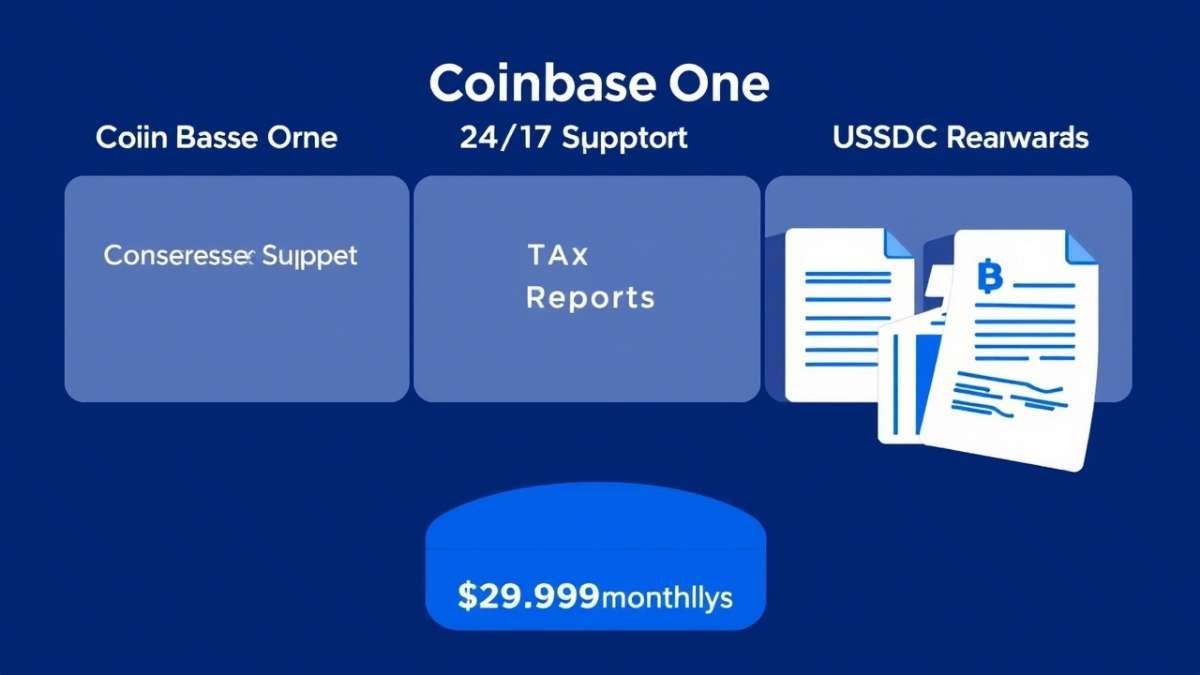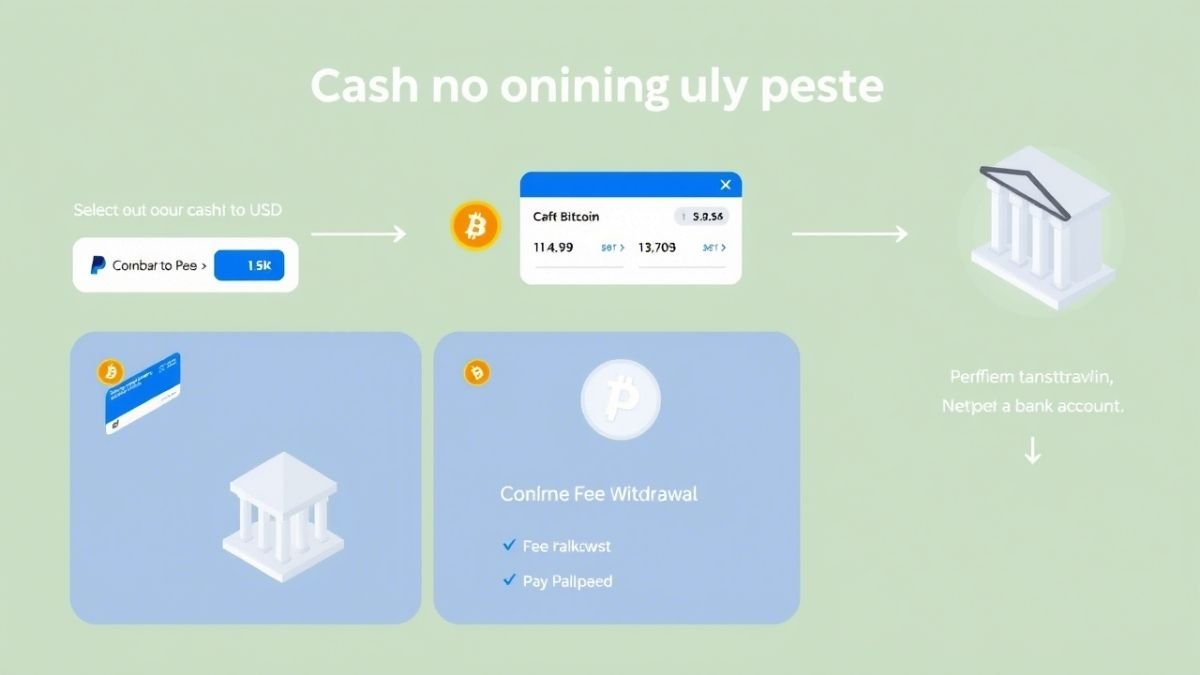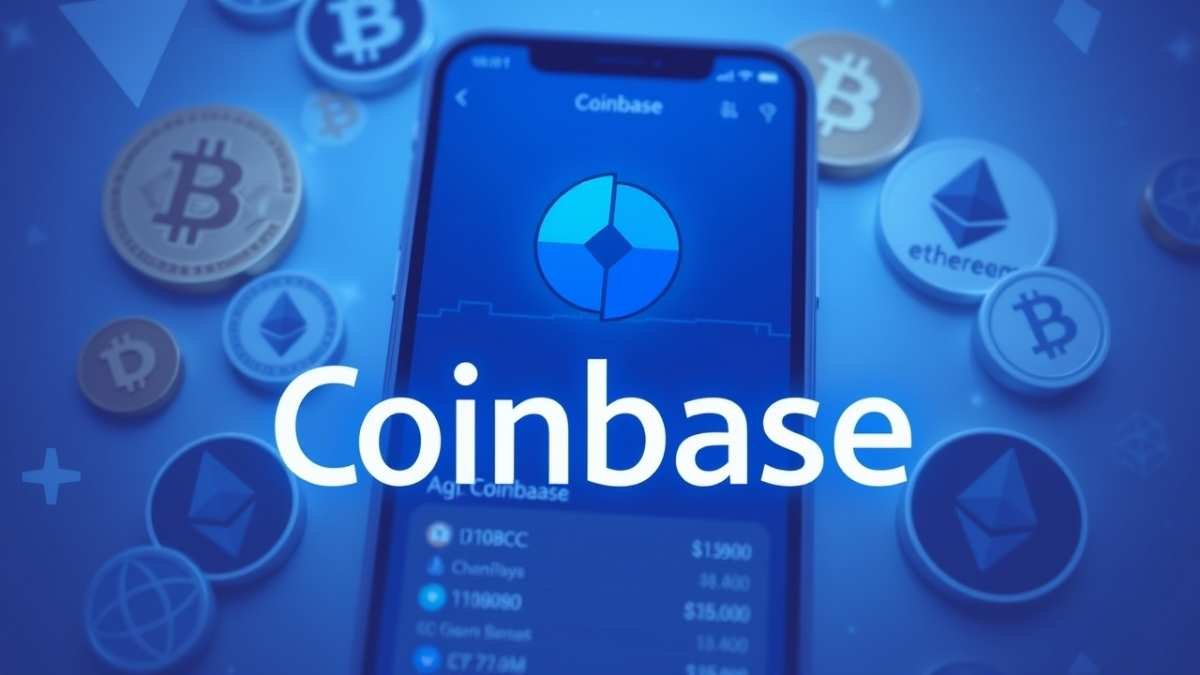What is Coinbase?
The cryptocurrency platform Coinbase leads the industry both in its sector and among competitors. Users on Coinbase can perform digital asset acquisition and asset management in addition to trading and dealing functions. Since 2012 Coinbase has developed into a reliable corporation focused on cryptocurrencies. Its simple interface attracts beginners. Coinbase successfully satisfies professionals in the trading field with its expert components. This piece describes how Coinbase functions with its available features along with explaining its multiple services. User access to knowledge about Coinbase One alongside steps for cashing out from Coinbase and fee information at Coinbase. The explanation for Coinbase becoming the top crypto platform choice of millions will be clearly presented to you.
The Basics of Coinbase
The platform Coinbase operates with cryptocurrency exchange functions from bases in the United States. The business was established by founders Brian Armstrong together with his co-founder Fred Ehrsam. The headquarters of the company resides in San Francisco. The company provides services to customers all around the world from its operations in more than 100 nations. The stock of Coinbase trades under COIN symbol on NASDAQ. The company maintains more than 89 million verified users on its platform during 2025.
The platform supports over 250 cryptocurrencies. Bitcoin (BTC), Ethereum (ETH) along with USDC represent some of the cryptocurrencies available on Coinbase. Through its platform users can exchange the major currencies as well as discover less notable altcoins. Coinbase has become recognized throughout the market for its effective security measures. Almost all the user-held funds (98%) are stored in offline cold storage systems. This protects against hacks. Regulatory safeguards make it comfortable for numerous people to select this platform.
Coinbase offers multiple services. The platform offers three main features to its users which include a retail trading platform and advanced trading interface and custodial wallets. Through its merchant solution segment it provides business solutions in addition to its other services. Users can access crypto through the mobile application of the platform. The mobile application can be found for both Android and iOS systems.
Coinbase’s Mission

Coinbase dedicates itself to establishing a system that enables open financial operations. The platform operates for the purpose of delivering cryptocurrency access to all types of users. Blockchain technology represents the future to which the platform advocates for transforming financial processes. The project works toward replacing dependence on standard banking institutions. Coinbase supports financial inclusion. The system enables unconnected people to obtain access to digital currencies.
The company also educates users. The “Learn to Earn” program from Coinbase features both educational video content as well as test assessments. Use of the learning platform enables users to receive cryptographic payments as compensation. The platform creates incentives for new users to develop their knowledge of crypto technology. Coinbase’s mission drives its growth. The company persists in developing blockchain innovations in the market.
Key Features of Coinbase
Coinbase delivers multiple tools for its users. These cater to beginners and experts. Here are its main features:
The main trading interface operates with simplicity. Through its platform users can purchase crypto currency by depositing fiat money either in US dollars or euros and so on. The company accepts payments through bank accounts and debit cards and PayPal.
- Advanced traders have access to Coinbase Advanced Trade. The platform includes advanced functions for users who trade and chart data. Coinbase users have access to placing three different orders including market orders and limit orders and stop orders.
- Coinbase Wallet: A non-custodial wallet. Users control their private keys. Users can store multiple thousand different tokens in addition to NFTs on this platform.
- Users who stake their assets such as ETH will earn rewards through this process. The fee-based service provided by Coinbase manages the process.
- The Coinbase Card operates as a debit instrument to allow people to make payments with cryptocurrency. Users can convert cryptocurrencies to traditional currencies through the payment process provided by this platform.
- Completion of educational tasks allows users to receive crypto rewards through Learning Rewards.
- The security features of users’ funds include Two-factor authentication (2FA) together with cold storage alongside insurance protection.
These features make Coinbase versatile. It suits casual users and serious traders alike.
Table 1: Coinbase Platforms and Features
| Platform/Service | Description | Target Audience |
|---|---|---|
| Coinbase Platform | Simple interface for buying/selling crypto with fiat. | Beginners |
| Coinbase Advanced Trade | Advanced trading with charting and order types. | Experienced Traders |
| Coinbase Wallet | Non-custodial wallet for storing tokens and NFTs. | All Users |
| Coinbase Card | Debit card for spending crypto. | All Users |
| Staking | Earn rewards by staking assets like ETH. | Investors |
What is Coinbase One?
Coinbase One is a premium subscription service. It launched to enhance the Coinbase experience. It costs $29.99 per month. Users get a 7-day free trial. The service offers exclusive benefits. These help users save money and access premium features.

Benefits of Coinbase One
- Zero Trading Fees: Simple trades have no fees. This applies to the main Coinbase platform, not Advanced Trade. There’s a trading volume limit. Regular fees apply if exceeded.
- Fee Rebates: Users get 25% back on Coinbase Advanced spot fees. This is paid in USDC, up to $100 monthly.
- Boosted USDC Rewards: Earn 4.5% APY on the first $30,000 in USDC. The standard rate (4.1%) applies after.
- Concierge Support: 24/7 phone support from a dedicated team.
- Tax Support: A pre-filled Form 8949 simplifies crypto tax filing.
- Gas Rebates: Up to $10 monthly in gas fees on the Base network.
- Partner Deals: Exclusive offers, like discounts on TurboTax plans.
- Sweepstakes: Monthly members-only contests for prizes like 1 BTC.
Who Should Use Coinbase One?
Coinbase One suits frequent traders. It’s ideal for those who trade high volumes. The zero-fee benefit saves money on simple trades. The concierge support helps resolve issues quickly. However, casual users may not need it. The $29.99 monthly fee may outweigh benefits for low-volume traders.
Reference: Coinbase One Official Page
How to Cash Out on Coinbase
How to cash out on Coinbase is a common question. Cashing out means converting crypto to fiat (like USD) and withdrawing it. Coinbase makes this process simple. Here’s a step-by-step guide based on best practices.
Steps to Cash Out
- Log In: Access your Coinbase account on the website or app.
- Go to Assets: Click “Assets” or “Portfolio” to view your crypto balance.
- Select Crypto: Choose the cryptocurrency to sell (e.g., BTC, ETH).
- Click Sell: Tap the “Sell” or “Cash Out” button.
- Enter Amount: Specify how much crypto to convert to fiat. You can sell all or part of your balance.
- Choose Fiat: Select the fiat currency (e.g., USD, EUR).
- Select Destination: Choose your linked bank account or PayPal. Add a payment method in “Settings” if needed.
- Preview Transaction: Review the amount, fees, and total received. Coinbase shows all fees upfront.
- Confirm: Click “Sell Now” or “Cash Out Now.” Enter 2FA code if enabled.
- Wait for Processing: Fiat withdrawals take 1–5 days. Instant cashouts are available via Real-Time Payments (RTP) for up to $100,000 per transaction in the U.S.
Tips for Cashing Out
- Verify Your Account: Complete identity verification to unlock full features.
- Check Fees: Conversion fees apply. Network fees may apply for crypto withdrawals.
- Avoid Peak Times: High market volatility can slow transactions.
- Use Coinbase One: Zero-fee simple trades reduce costs for members.
- Double-Check Details: Entering the wrong bank details can delay funds.
Common Issues
- Wrong Address: Sending crypto to an incorrect wallet is irreversible. Always verify addresses.
- Bank Restrictions: Some banks reject Coinbase transfers. Contact your bank if issues arise.
- Limits: New accounts have lower withdrawal limits. These increase over time.
Reference: Swissmoney – How to Cash Out on Coinbase
Does Coinbase Charge Fees?
Does Coinbase charge fees? Yes, Coinbase charges fees. These vary by transaction type, payment method, and platform. Fees are a major revenue source for Coinbase. They help maintain security and operations. However, fees can be high compared to other exchanges. Understanding them is key to minimizing costs.
Types of Coinbase Fees
- Trading Fees:
- Simple Trades: Fees depend on payment method and order size. For example, debit card purchases incur a 3.99% fee. Bank account purchases cost 1.49%.
- Coinbase Advanced Trade: Uses a maker/taker model. Fees range from 0.05% to 0.6%, based on 30-day trading volume. Higher volumes mean lower fees.
- Spread Fee: Coinbase adds a spread (about 0.5%) to buy/sell prices. This applies to simple trades.
- Coinbase One: Zero fees for simple trades (with a volume limit). Advanced trades get 25% rebates.
- Conversion Fees:
- Converting one crypto to another incurs a spread fee (up to 2%). No additional Coinbase fee applies.
- Converting USD to USDC is free via bank transfer.
- Withdrawal Fees:
- Fiat Withdrawals:
- ACH transfers: Free in the U.S.
- Wire transfers: $25 in the U.S., $10 for international.
- SEPA transfers: €0.15 in the EU/UK.
- PayPal: Free in the U.S., 1% in Canada.
- Crypto Withdrawals: Network fees apply. Coinbase covers the first withdrawal per month. Fees vary by blockchain (e.g., $1–$5 for BTC).
- Fiat Withdrawals:
- Other Fees:
- Staking Fees: Coinbase takes a percentage of staking rewards (e.g., 25% for ETH).
- Coinbase Card: No transaction fees, but a spread applies when spending crypto. ATM withdrawals may incur fees.
- Loan Fees: Borrowing USD against BTC collateral incurs a 2% flat fee if sold.
Table 2: Coinbase Fee Breakdown
| Transaction Type | Fee Structure | Notes |
|---|---|---|
| Simple Trade (Buy/Sell) | 1.49% (bank), 3.99% (debit card), ~0.5% spread | Zero fees with Coinbase One (limited) |
| Advanced Trade | 0.05%–0.6% (maker/taker), 25% rebate with Coinbase One | Based on 30-day trading volume |
| Crypto Conversion | Up to 2% spread | No additional Coinbase fee |
| Fiat Withdrawal (ACH) | Free (U.S.) | Bank may charge fees |
| Crypto Withdrawal | Network fees, first withdrawal free monthly | Varies by blockchain |
| Staking | Percentage of rewards (e.g., 25% for ETH) | No cost to stake/unstake |
How to Minimize Fees
- Use Coinbase One: Zero fees on simple trades and rebates on Advanced Trade.
- Trade on Advanced Trade: Lower fees for high-volume traders.
- Use Bank Transfers: ACH transfers are cheaper than debit cards.
- Choose Low-Fee Coins: Transfer coins like XLM for lower network fees.
- Adjust Network Costs: Select slower transaction speeds for cheaper fees.
- Convert to USDC: Free USD-to-USDC conversion via bank transfer.
Reference: BitDegree – Coinbase Fees 2025
Security and Regulation
Coinbase prioritizes security. It uses 2FA for logins and transactions. Most funds are in cold storage. The platform is insured against hacks. It complies with U.S. regulations, including KYC and AML rules. This makes it a trusted choice. However, users must enable 2FA and avoid phishing scams.
Coinbase has faced criticism. Some users report account freezes. Others dislike high fees. Despite this, its transparency and regulation set it apart. It’s one of the few exchanges listed on a major stock market.
Coinbase vs. Competitors
Coinbase competes with Binance, Kraken, and Bybit. Each has strengths and weaknesses. Coinbase is beginner-friendly. Its fees are higher than Binance or Kraken. However, its security and regulation appeal to cautious users. Binance offers more coins but faces regulatory issues. Kraken has lower fees but a less intuitive interface.
Table 3: Coinbase vs. Competitors
| Exchange | Pros | Cons | Best For |
|---|---|---|---|
| Coinbase | Easy to use, secure, regulated | High fees, limited coins | Beginners, U.S. users |
| Binance | Low fees, many coins | Regulatory concerns, complex interface | Advanced traders, global users |
| Kraken | Low fees, strong security | Less intuitive interface | Cost-conscious traders |
| Bybit | High leverage, advanced tools | Limited fiat support | Derivatives traders |
Coinbase’s Role in 2025
In 2025, Coinbase is a crypto leader. The market is growing fast. Blockchain adoption is rising. Coinbase supports this trend. It adds new coins regularly. It expands services like staking and NFTs. Its Coinbase One program attracts active traders. The platform also explores DeFi and Web3.
Coinbase faces challenges. Competition is fierce. Regulatory changes could impact operations. Scalability issues affect some blockchains. Despite this, Coinbase innovates. It invests in security and user experience. Its public status boosts credibility.
Getting Started with Coinbase
Starting with Coinbase is easy. Follow these steps:
- Create an Account: Visit coinbase.com or download the app. Enter your email and create a password.
- Verify Identity: Submit ID and personal details for KYC compliance.
- Add Payment Method: Link a bank account, debit card, or PayPal.
- Buy Crypto: Choose a cryptocurrency and amount. Confirm the purchase.
- Secure Your Account: Enable 2FA and store your recovery phrase safely.
New users get a $200 crypto bonus after signing up (terms apply).
Pros and Cons of Coinbase
Pros
- User-friendly interface.
- High security and regulation.
- Supports 250+ cryptocurrencies.
- Offers staking, wallet, and card.
- Educational resources for beginners.
Cons
- High fees compared to competitors.
- Limited coin selection vs. Binance.
- Account freezes reported by some users.
- Advanced Trade interface may confuse beginners.
Conclusion
Coinbase is a top cryptocurrency platform. It’s ideal for beginners and active traders. Its simple interface makes crypto accessible. Its advanced tools suit professionals. Coinbase One offers premium benefits like zero fees. Cashing out on Coinbase is straightforward with proper setup. Coinbase does charge fees, but smart strategies can reduce them.
The platform’s security and regulation build trust. Its features, like staking and the Coinbase Card, add value. Despite high fees, Coinbase remains a leader. It drives crypto adoption in 2025 and beyond. Whether you’re new to crypto or a seasoned trader, Coinbase has something for you. Sign up, explore, and join the crypto revolution.
- Coinbase Official Website
- BitDegree – Coinbase Fees 2025
- Swissmoney – How to Cash Out on Coinbase
- NerdWallet – Coinbase Review 2025
- Crypto Pro – Coinbase Fees Explained






